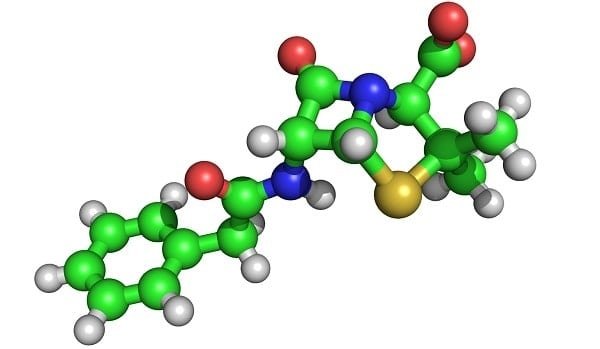Allergy to penicillin

Allergic reactions to penicillin can occur when it is introduced in the form of a medicinal preparation into the human body.
This is, perhaps, the most dangerous type of allergy, which never manifests itself the first time in acute forms, but with repeated or repeated administration of antibiotics of the penicillin class, it can lead to anaphylactic shock and death.< /p>
Therefore, physicians are required to consider whether the patient has previously exhibited reactions to penicillins before prescribing any courses of treatment or drug therapies containing them.
What is a penicillin allergy?
This is an aggressive reaction of the immune system to antibiotics, particularly those of the penicillin class.
This type of allergy develops very quickly and its first manifestations can be observed only 2-3 hours after the introduction of the drug into the human body.
What are the symptoms
If a person has an established predisposition to allergic reactions to antibiotics, then the manifestations of penicillin allergy should not be expected to occur at all.
After a few hours, the following clinical manifestations can be observed – a small rash that covers the whole body, itching, eye irritation, the face may become inflamed, the appearance of drainage from the tongue and lips is also possible.
In the case of more complicated and repeated attacks of penicillin allergy, the symptoms may be more pronounced – breathing becomes difficult, wheezing occurs, the allergic person may lose consciousness, fall into a state of sleep, that is, falling asleep so hard that he falls asleep suddenly, which is characteristic of the disease narcolepsy.
The pulse in a complicated course of an allergic reaction to penicillins is most often unstable, diarrhea occurs, bruising may appear on the skin surface of various parts of the body.
An allergic attack can also be accompanied by severe nausea and vomiting, with a sharp drop in blood pressure and a rapid rise in body temperature.
All these are characteristic signs of an anaphylactic reaction, which requires qualified and immediate medical attention, because acute allergic attacks to antibiotics are dangerous not only for health, but also for human life.
Clinical symptoms of penicillin allergies include urticaria, angioedema, anaphylaxis, exfoliative dermatitis, suffocation attacks, drug fever, and pulmonary eosinophilic infiltrates.
Treatment of penicillin allergy
In mild cases of an allergic reaction to penicillins, allergists prescribe antihistamines – these can be suprastin, dimedrol, loratadine, fexofenadine and others.
In more severe cases, epinephrine is introduced into the body of the person allergic to penicillins. And then a course of intravenous administration of antihistamines and corticosteroid drugs is prescribed.
Subsequently, if a person has already had attacks of penicillin allergy, they should no longer be used to treat penicillins, but they can be successfully replaced with antibiotics from the macrolide group.
Prophylaxis
This is actually the main treatment for penicillin allergy. Whenever a choice has to be made as to what therapy should be administered, antibiotics of the penicillin class must be excluded.
Prophylactic measures for this type of allergy include therapeutic courses, in which small amounts of penicillin are prescribed at the first stage, and these doses are gradually increased towards the end of therapy.



